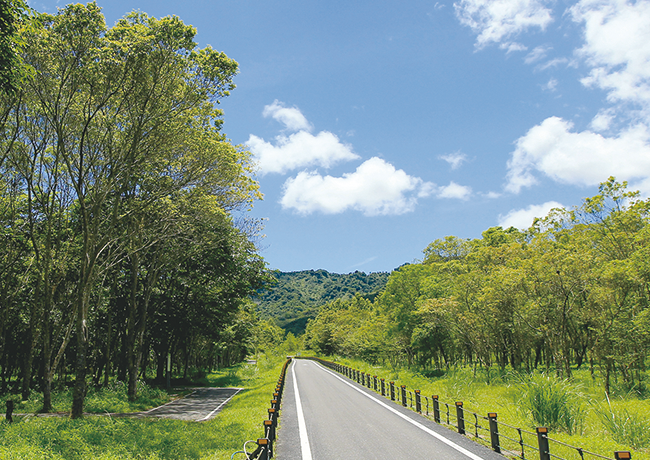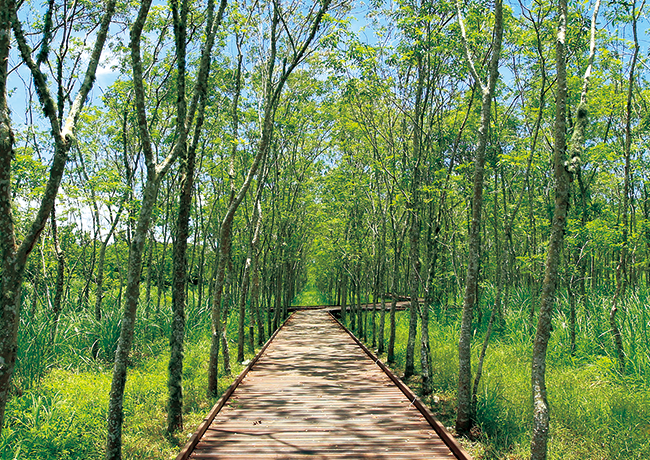Background and Goals
Since 2002, Taiwan Sugar Corporation (TSC) has been actively participating in the government's flatland afforestation program. Currently, TSC manages 10,309 hectares of flatland afforestation. As the 20-year incentive period for flatland afforestation subsidies gradually comes to an end, the continued utilization of these afforested lands will align with government policies. This comprehensive plan for the utilization of afforested lands is crucial to addressing the demand and supply of agricultural products and supporting TSC's future agricultural development.
Implementation Progress
Following the completion of the 20-year incentive period for TSC's flatland afforestation, utilization plans have been developed based on the Ministry of Agriculture's inventory of TSC's afforested lands on August 19, 2021. The lands are categorized into three zones: "Areas with ecological habitat value," "Suitable for agricultural production," and "Unfavorable for cultivation." The proposed utilization plans for each zone are as follows:
- Areas with Ecological Habitat Value.
- Moderated retention of afforested trees will be maintained to create a bio-habitat environment. TSC will continue to collaborate with the Ministry of Agriculture to achieve a goal of balancing ecological habitat preservation and agricultural production.
- Collaborate with the Pingtung Branch of the Forestry Bureau to provide the Linhou Silin Flatland Forest Park as a forest carbon sink experimental site. Apply to the Ministry of Environment for a "Forestry and Afforestation Carbon Sink Project" to obtain relevant data on carbon sequestration benefits and future carbon sink revenue.
- In accordance with the ecological incentive mechanisms developed by the Forestry Bureau, moderately retain trees, continuously create habitat ecological environments, provide habitats, foraging grounds, and ecological corridors for wildlife. Apply for ecological incentive subsidies based on the afforestation land's contributions to the ecological environment.
- Areas Suitable for Agricultural Production
- Inventory afforested lands with suitable soil conditions for cultivation and provide them to the Energy Bureau for assessment of agricultural-based photovoltaic power installations.
- In accordance with government policies, provide suitable land for the authorities to plan for a medicinal plant production zone, assess the feasibility of establishing a bio-secure poultry farm for egg production, provide space for stray dogs, a demonstration zone for irrigation with biogas residue and slurry, and the establishment of a livestock wastewater resource recovery center by local government environmental protection units.
- Continuously provide tree species for landscaping and beautification purposes in public works projects.
- Areas Unfavorable for Cultivation
Inventory afforested lands that are frequently flooded, experience topsoil erosion, or have exposed gravel, making tree growth difficult. These areas will be evaluated by the Ministry of Agriculture to determine if they meet the criteria for "unsuitable for agricultural production" and may be considered for the installation of solar photovoltaic power plants in line with the government's green energy policy.
Expected Benefits
- Afforested areas with beautiful forest landscapes and significant ecological and habitat value will continue to be maintained as bio-habitats, enhancing the scenic value of the flatland afforestation program.
- In alignment with the government's green energy policy, these areas will serve dual purposes, providing land for agricultural production and implementing various agricultural policies, thereby increasing the diversity of land use.
- Lands unsuitable for cultivation will be used for green energy facilities, ensuring alignment with national policy development and promoting land revitalization and reuse.
Collaboration Partners and Opportunities
TSC will continue to collaborate with the Ministry of Agriculture to maintain the Linhou Silin Flatland Forest Park in Pingtung, the Aogu Wetland Forest Park in Chiayi, and the Danongdafu Forest Park in Hualien as sustainable development parks. Expired afforested lands will be managed as eco-friendly habitats while simultaneously serving agricultural production purposes, creating diverse values for the land.






